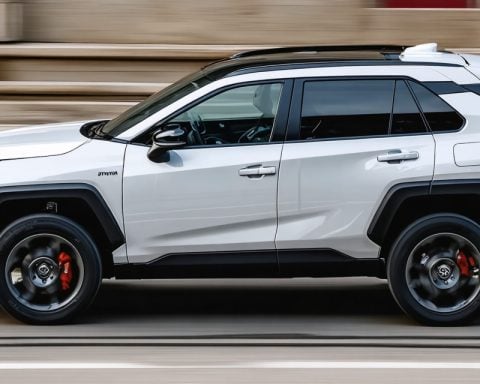The automotive world is brimming with anticipation for 2025, with exciting opportunities on the horizon. A recent exploration reveals a mix of hopes and challenges that define this evolving landscape.
As the festive season beckons, the presence of goodwill and hope is palpable. This article aims to reflect the optimism of the season while envisioning what the future might hold for electric vehicles, which have sparked intense debate in recent years. The once-clear divide—evangelists claiming that EVs will save the planet and detractors lamenting their impact on jobs—has blurred. It seems likely that the truth lies somewhere in between.
The necessity for electric vehicles in certain areas—such as local delivery services—is clear; yet, their practicality for long-distance travel remains questionable. Despite the chaos surrounding electrification policies, there could be a significant shift: the suggestion that by 2035, around 40% of vehicles could be electric is gaining traction.
Meanwhile, the merger talks between Honda and Nissan reveal the industry’s struggles. Both companies are seeking a revival after lagging in hybrid and EV technology. With Nissan facing dire financial times and Honda making drastic sales adjustments, this potential alliance could reshape their futures.
As the auto industry heads into 2025, the balance between traditional and electric vehicles, alongside cooperative strategies, will be vital for survival and growth in this competitive market.
The Future of the Automotive Industry: Key Trends and Innovations by 2025
The Evolving Landscape of Electric Vehicles
The automotive industry is on the brink of a transformative era as it approaches 2025. With a mix of optimism and challenges, significant innovations are anticipated, particularly in the realm of electric vehicles (EVs). This article examines the key trends, limitations, and predictions shaping the future of the automotive world.
Key Trends in Electric Vehicle Adoption
1. Increased EV Adoption Rates
A growing body of research suggests that by 2025, the adoption of electric vehicles is expected to soar. With government incentives and the rising urgency to address climate change, analysts project that over 30% of new vehicles sold globally could be electric. This surge will depend on infrastructure improvements, battery technology advancements, and consumer acceptance.
2. Charging Infrastructure Expansion
One major obstacle to widespread EV adoption has been the lack of charging stations. However, significant investments from both private and public sectors are focusing on expanding charging networks. By 2025, urban areas are expected to boast charging stations every few miles, drastically improving the convenience factor for EV users.
3. Advancements in Battery Technology
Battery longevity, cost, and efficiency are crucial factors influencing EV adoption. Innovations in solid-state battery technology are emerging, promising to enhance range while reducing charging times. By 2025, we may see vehicles with batteries that can recharge to 80% in just 15 minutes and offer ranges exceeding 500 miles.
Limitations Facing the EV Market
– Initial Costs: Despite price reductions in EV production, initial purchase prices remain a barrier for many consumers. This is expected to improve as economies of scale come into play.
– Environmental Concerns: While EVs reduce greenhouse gas emissions during operation, questions about the environmental impact of battery production and disposal persist, pushing for sustainable practices in manufacturing.
Pros and Cons of Electric Vehicles
Pros:
– Lower Operating Costs: EVs generally offer lower fuel and maintenance costs compared to traditional gasoline vehicles.
– Environmental Benefits: Reduced emissions contribute to better air quality and a more sustainable future.
Cons:
– Higher Initial Costs: The purchase price of EVs can still be higher than conventional cars, albeit decreasing.
– Range Anxiety: Long-distance travel remains a concern due to charging station availability and battery limits.
Innovations and Predictions
1. Smart Vehicle Features
Emerging technologies like vehicle-to-everything (V2X) communication systems are predicted to enhance the safety and efficiency of EVs, allowing vehicles to communicate with one another and infrastructure.
2. Autonomous Driving Integration
By 2025, the integration of autonomous driving features in EVs will likely become more prevalent, making personal transportation safer and more convenient.
Market Insights and Comparisons
As the automotive industry evolves, manufacturers face increasing pressure to innovate. Companies like Honda and Nissan, currently exploring merger opportunities, must adapt to rapidly changing market dynamics, particularly in hybrid and EV technologies. Their combined resources could lead to a stronger competitive position against established EV manufacturers like Tesla and emerging startups.
Future-Proofing the Automotive Industry
With the automotive industry’s future hinging on the balance of traditional and electric vehicles, manufacturers will need to invest significantly in research and development. Sustainability and innovation will play central roles in how companies strategize their offerings to remain relevant in a competitive environment.
For more insights on automotive trends, visit AutoTrader.













